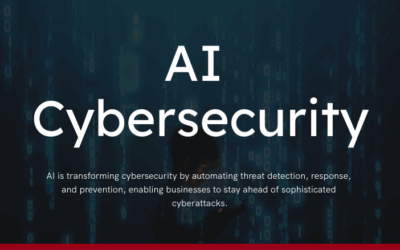Protect Your Business from Email Cyber Threats with Robust Security Measures
Email security is a critical issue in the digital age. As one of the most widely used forms of electronic communication, email is particularly vulnerable to cyber threats and malicious activities. Unsafe practices and weak security measures can expose personal information, financial data, confidential documents, and other sensitive material to hackers or identity thieves.
Understanding the basics of email security and implementing best practices whenever possible will protect against these risks. Some key steps include using strong passwords, encrypting emails where possible, monitoring suspicious activity on accounts, and regularly updating your software to avoid potential threats. Additionally, users should always be mindful when opening links or attachments from unknown sources, as they could contain malicious code that can put their data at risk.
Users can effectively protect themselves and their data from potentially devastating consequences by taking the necessary steps to ensure email security.
Strong Passwords Are a Must
Users can ensure that their emails remain secure by utilizing strong passwords. A strong password is one that is long (at least 8 characters), contains both uppercase and lowercase letters, numbers, and special characters (!, %, *). It should not contain any familiar information such as your name or date of birth. Additionally, avoid using the same password for multiple accounts. To make sure you are creating a fully secure password that cannot easily be guessed by someone else, use a combination of random words or phrases instead of one word. Utilizing two-factor authentication when available adds an extra layer of security to your account. Finally, never share your passwords with anyone else – even if you trust them!
Implement Encryption Protocols
Sensitive data should never be sent unencrypted via email, as it could put confidential information at risk. Implementing robust encryption protocols on all outgoing emails is a must to keep data safe from malicious actors. Any emails containing sensitive or confidential information should also go through an authentication process to verify the sender’s identity.
Keep Employees Informed of Potential Threats
Employees should also be aware of email security threats, from phishing scams to malicious attachments. Organizations can reduce the likelihood of a successful attack by educating users about these risks and instructing them on how to spot potential problems.
Install Anti-Virus Software
Finally, having reliable anti-virus software installed and regularly updated is essential for stopping malicious activity before it has a chance to take effect. Anti-virus software can monitor the performance of your computer on a regular basis and detect any suspicious activity that could potentially be malicious. It will alert you if it finds anything, allowing you to act before it becomes an issue. In addition, anti-virus software typically has features like automatic updates so that it can stay ahead of new threats as they appear online. Taking these steps not only helps protect your data but also helps keep your computer running smoothly.
By taking these steps to protect against email security threats, businesses can make sure that their data remains secure and confidential. Taking an active stance against cybercrime will keep organizations safe from harm and foster trust with customers and partners alike. Investing in secure email practices is a necessary expense to ensure the safety of an organization’s most valuable information.
6 Security Threats
With an ever-evolving threat landscape, organizations must stay ahead of the curve to ensure their data, customers and partners are safe from potential attacks. By understanding the following six security threats and implementing preventative measures now, you will proactively safeguard against disaster later.
Phishing
One of the most common security threats to email is phishing. Phishing is a form of social engineering that is used to trick individuals into giving away personal information, such as passwords or credit card numbers. The attacker will typically send an email that appears to be from a legitimate source, such as a bank or a government agency, and ask the recipient to click on a link or enter their information on a fake website. Being wary of any unsolicited email will protect against phishing, especially those that ask for personal information. It is also a good idea to use a spam filter to help block these types of emails.
Malware
Another security threat to email is malware. Malware is a type of software that is designed to harm a computer or steal information. It can be spread through email attachments or links that, when clicked on, will download the malware onto the recipient’s computer. Being cautious when opening email attachments or clicking on links will help to protect against malware, especially from unknown sources. It is also a good idea to use anti-virus software to help detect and remove malware.
Ransomware
Ransomware attacks involve malicious code that encrypts files and locks users out until they pay a ransom fee. Organizations should ensure that their backups are kept current so that if this type of attack succeeds, they can recover their data without having to pay the fee.
Email Spoofing
A third security threat to email is email spoofing. Email spoofing is when an attacker sends an email that appears to be from a legitimate source but is actually from a different sender. Email spoofing is used to spread malware or phish for personal information. Use email authentication techniques such as SPF (Sender Policy Framework) and DKIM (DomainKeys Identified Mail) to protect against email spoofing.
MITM Attacks
A fourth security threat to email is man-in-the-middle attacks (MITM). In a MITM attack, the attacker intercepts an email message and alters it before it reaches the intended recipient. This can be done to steal personal information, spread malware, or change the content of the email. Use secure protocols such as HTTPS and SSL (Secure Sockets Layer) to encrypt email communications to protect against MITM attacks.
Email Account Compromise
A fifth security threat to email is email account compromise. This happens when an attacker gains access to an email account by guessing or stealing the password. Once the attacker has access to the account, they can use it to send spam or phishing emails, steal personal information, or spread malware. Always use a strong password and never share it with anyone to protect against email account compromise. Additionally, enabling two-factor authentication (2FA) on the account is a good idea, which adds an extra layer of security.
Keeping Your Organization Safe
Understanding the various security threats and taking steps to protect against them can help ensure that your email communications remain secure. Be cautious when opening email attachments or clicking on links, especially from unknown sources. Use anti-virus software and spam filters to help detect and remove malware. Use email authentication techniques such as SPF and DKIM. Use secure protocols such as HTTPS and SSL to encrypt email communications. Use a strong password and enable two-factor authentication to protect your email account. Following these best practices can help protect yourself and your organization from email-based security threats.




